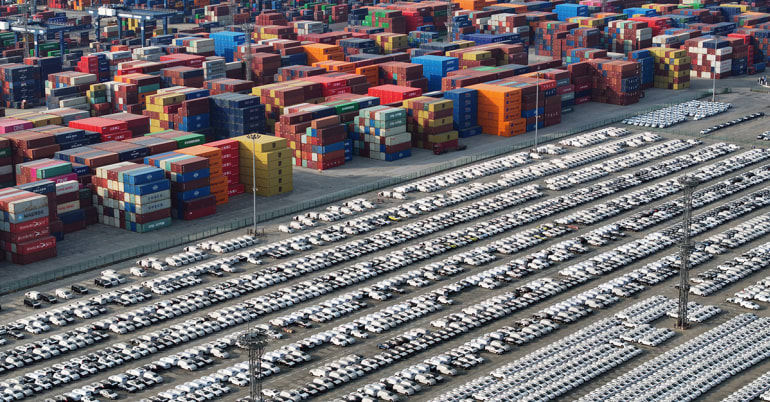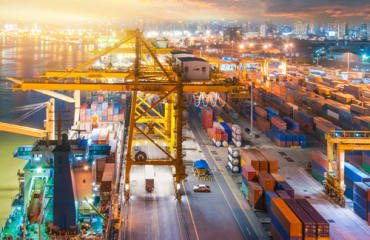Despite the magnitude of the trade tariffs levied by the US on Liberation Day and their pause afterwards, we believe many Asian economies and credit markets will absorb the impact of tariffs, adapt and prosper in the long term.
Our views, based on the assumption that the US does not reverse course, are presented below.
Read also: What Liberation Day’s reciprocal tariffs mean for investors
1. Asian resilience will contrast with US stagflation
For the US economy, the tariffs will lead to an immediate supply-side shock. As higher prices erode US consumers’ spending power and corporate margins, growth will suffer and labour markets weaken amid increasing inflationary pressures. Among sectors, those impacted most heavily are likely to be retail, construction, and industrials followed by banks, real estate, leisure, and services demand. Technology and financial services, including banks and payments firms, are likely to be relatively insulated.
The Federal Reserve will cut rates to from 4.5% to 3.5%, and then gradually to 3.0%-2.75%. Initially, the Fed is likely to adopt a wait-and-see approach to the developing stagflationary conditions. Firms in the most heavily impacted sectors will face spikes in working capital, shrinking or negative margins and possibly cash burn. Rising distress among small and mid-sized firms, bank non-performing loans and consumer credit delinquencies will force the Fed to sharply cut rates.
A mild growth shock for Asia, but not a balance-sheet shock. To aid their economies, Asian central banks will likely cut rates and loosen monetary conditions. Such actions should mitigate the impacts, especially in more insulated economies like India. Overall, the level of impact on Asia’s economies will be determined by their openness to trade, US exposure, contribution of exports to GDP growth and the tools available to central banks to respond to the shock.
2. Adaptable China, insulated India and vulnerable ASEAN
China to offset mild impact on growth by aggressively repivoting its economy. A potential growth shock of 1-2% of GDP should be viewed in the context of the authorities’ willingness to deploy stimulus and transition from export-oriented growth and industrial policy to a balanced mix of industrial policy, high-value-added industrial growth, and greater consumption. Much of this change is already underway, with China’s economic transition in play since 2017.
India is a relative safe haven. The country is in the unique position of being a closed economy backed by a central bank with a strong balance sheet. Despite the 26% headline tariff on Indian exports, we highlight some constructive developments: the pharmaceutical sector seems to be exempt from the tariff; exports to the US are quite small in the context of the overall economy; the Reserve Bank of India is already acting to ease liquidity and has sufficient FX reserves to modestly weaken the rupee to support growth.
Likewise, Asian banks and insurers are large and extremely well capitalised, with predominantly Asian-based assets, including large exposures to non-interest and wealth-management businesses. These are largely investment-grade borrowers, rated by all three rating agencies, and part of a highly regulated industry with conservative regulations across Australia, Japan, Hong Kong, south east Asia, and India.
In ASEAN markets, exporters will bear the brunt. Vietnam’s exports to the US represent 30% of the country’s GDP, and both Thailand and Malaysia export goods worth 12% of GDP. As a result, these economies are likely to enter cyclical growth slowdowns.
Read also: Asia fixed income: a promising outlook for 2025
3. After initial spread widening, Asian credit will benefit from investor reallocation
Credit fundamentals and ratings appear solid. Asia’s strong domestic lending markets should continue to provide companies with a lower-rate alternative to USD debt markets, and most high-yield (HY) issuers have refinanced through the maturity wall of recent years. Defensive sectors are likely to benefit, with shorter duration investment grade (IG) and upper quality HY issuance from renewable energy, infrastructure, utilities and regulated industries (such as insurance) firms likely to field demand, due to their high cashflow visibility.
Short-term spread widening to be offset by medium-term reallocation. Reflecting US IG moves, longer dated IG and BBB rated Asian credit has also widened on the tariffs newsflow. Greater US HY spreads will impact Asia crossover and HY valuations as well. But in time, we expect investors’ reallocation from US debt and equities – including by Asian banks, wealth managers and institutional investors – into Asian credit to support the asset class. Key catalysts for this shift would be Fed rate cuts and, of course, any reversal of tariff policy.
Read also: Investment and risk implications of Trump’s Liberation Day
4. A trade war won’t derail Asia’s long-term growth trajectory
We believe extreme US trade protectionism is a long-term boon for Asia. For the region, it will catalyse economic progress, and build on its record of harnessing infrastructure development, education, industrial policy and, most significantly, manufacturing to make rapid advances. We see five trends underlying this shift:
- Global prowess in robotics, AI and green technologies, led by north Asian companies
- Greater inter-regional trade within Asia and with the ‘Global South’, putting Asia on course for generating 60% of global GDP by 2030
- Faster global expansion by Asian firms, in contrast to relying on exports
- Greater domestic consumption, enabled by domestic savings and policy shifts, especially via growth in digital services
- Reduced current-account drag and USD reliance as increased renewable and self-sourced energy lowers energy imports.
These trends, accelerated by changes in global trading practices, are likely to hasten Asia’s economic advance. In our view, more Asian firms are likely to become leaders, rather than participants, of supply chains.








